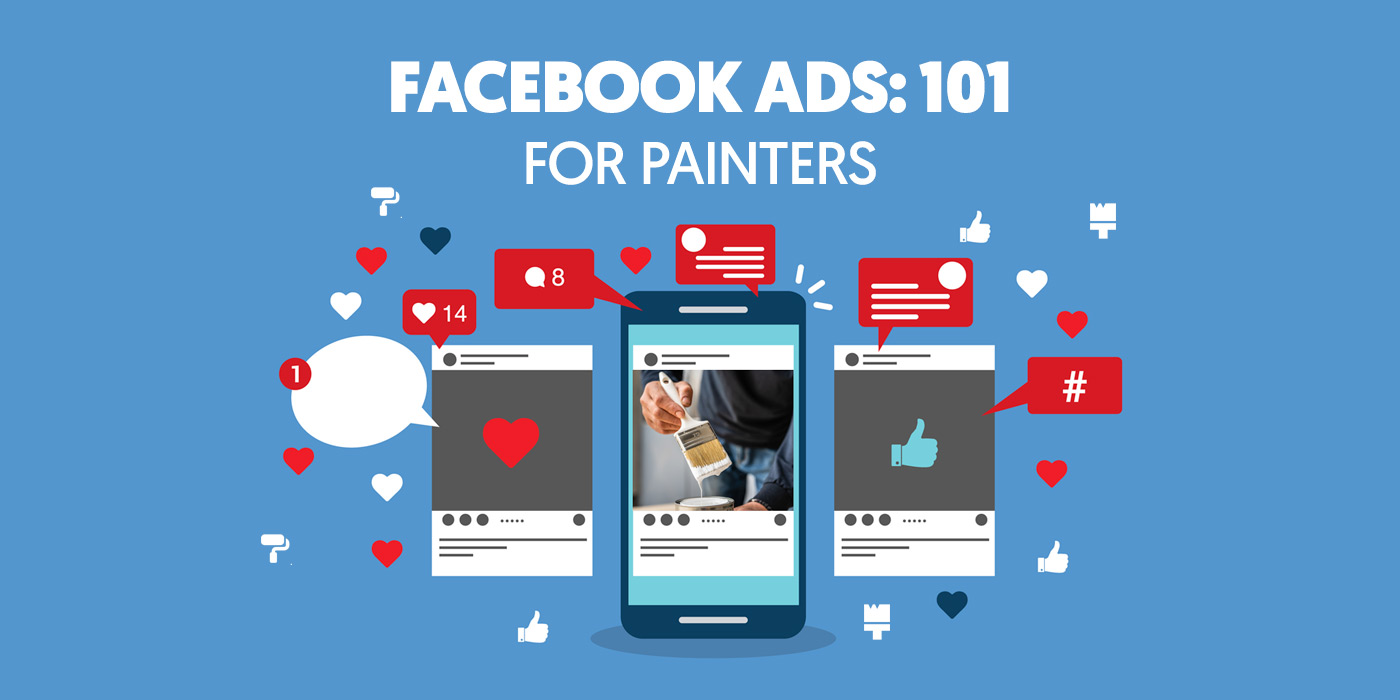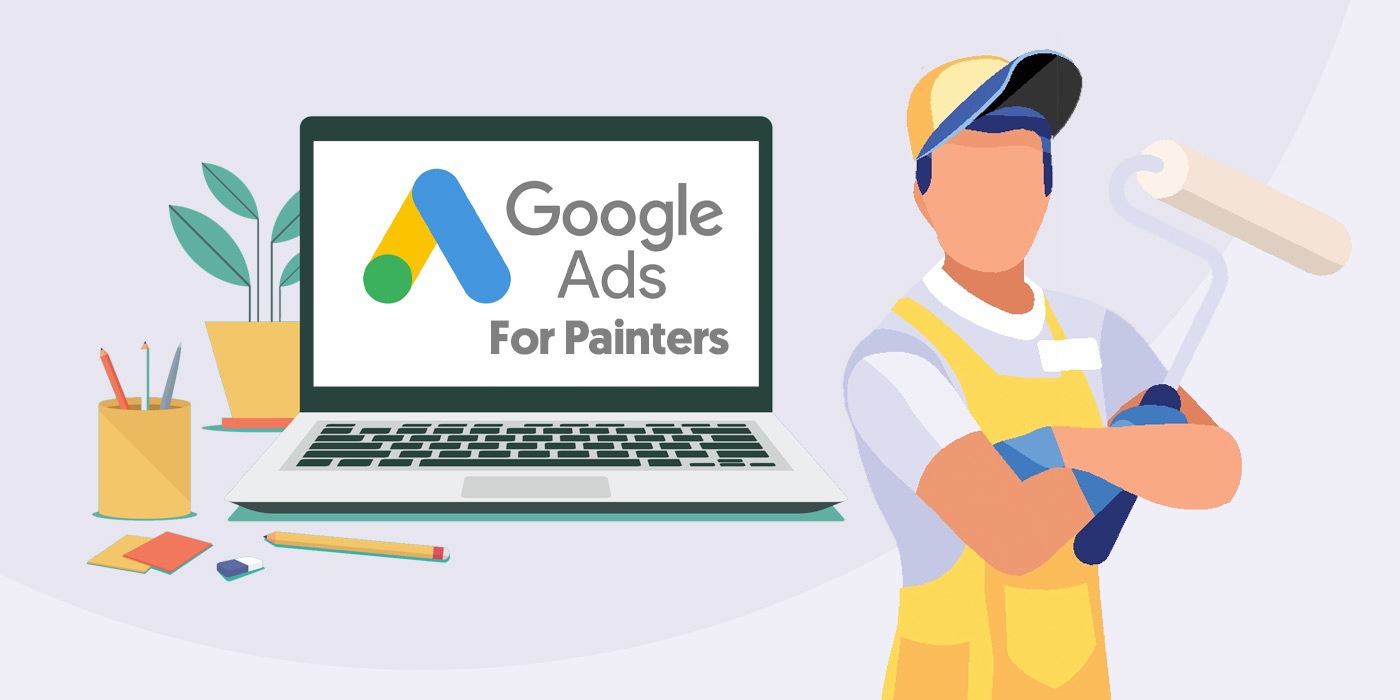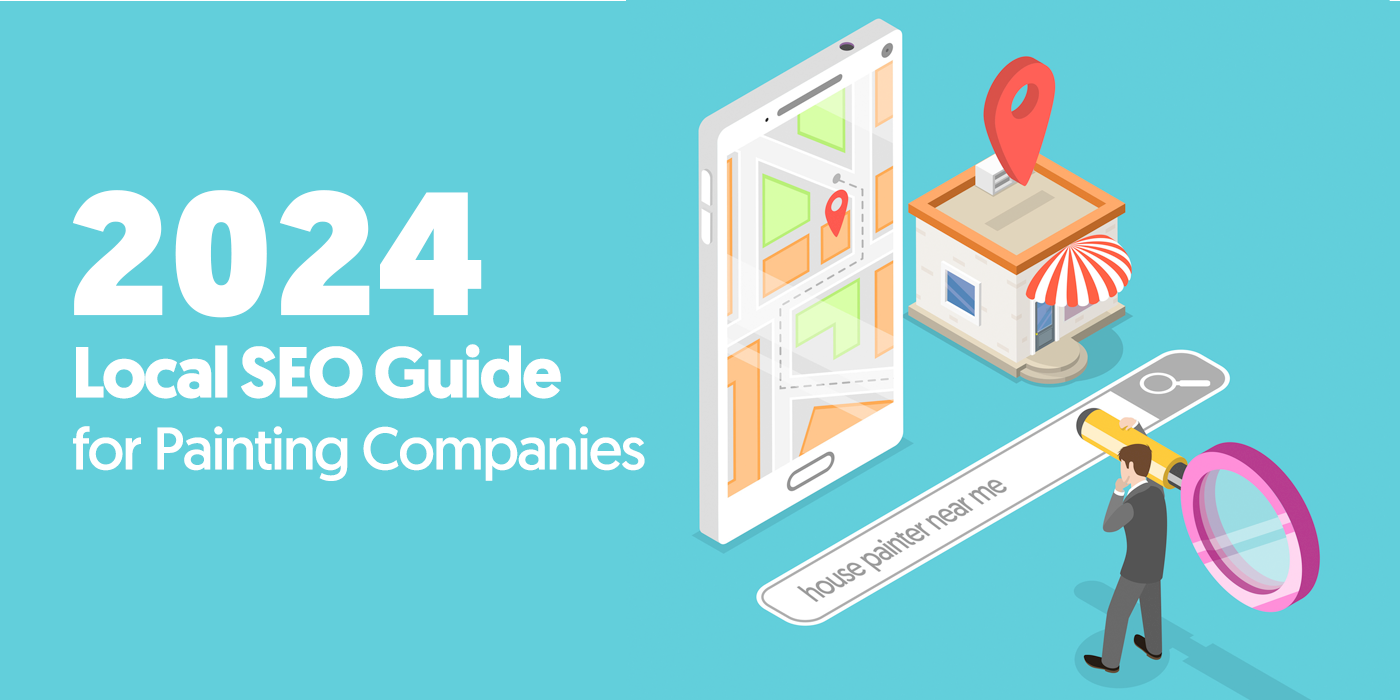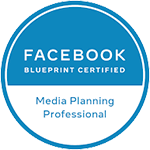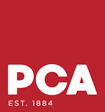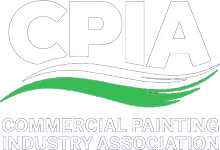
Pay-per-click advertising… Most Painting Business Owners have a love-hate relationship with this channel.
Why?
Because advertising a Painting Business online is unique compared to other home service businesses such as Plumbers and HVAC companies, and without the proper experience or knowledge, this can lead to runaway campaigns or expectations not being met.
Whether you are advertising on Google or Social Media, PPC ads are still the most effective way to generate predictable painting leads without waiting on results from long-term marketing channels like SEO.
Here, we will review eight PPC strategies to generate consistent painting leads throughout the year without being impacted by the seasonality of this industry.
But before you throw your credit card on a new campaign, let’s identify why advertising in the Professional Painting Industry is so unique!
Why are painting leads so hard to capture online?
The barrier to entry in the Professional Painting Industry is extremely low. Any homeowner can go grab a gallon of paint from Home Depot and slap it on the wall.
Unlike HVAC companies who will receive a call at 12am on a Sunday when the AC goes out in the middle of July, we consider painting a premium or luxury home service.
With that said, it takes a different seller mindset to target those with this unique buyer mindset.
So before you create a campaign, you MUST know who you’re speaking to. This is called your buyer or customer profile, and you need to have this defined before you start advertising online.
1. Create your Ideal Customer Profile

Most of our clients sell premium painting services. They are not the cheapest, by far.
So who would be interested in paying more for something that would most likely deliver the same end result?
Here is what a simple Customer Profile looks like:
We still need to go deeper. For instance, we prefer targeting the Mother, not the Father in the house.
So why does targeting Married Middle-Class Soccer Moms work well for our clients?
Buyer Profile: They own a house they’re proud of, they don’t like the idea of strangers in their home, they’re too busy to paint themselves, but they’re not too proud to admit it (looking at you, Husbands).
With this profile in mind, we can segment audiences by their likes and interests.
For instance, we can target people who like:
Know who you’re selling to, know their pain points, and build a sales process that attracts them to your business online.
Great! So where do we start?
Let’s dive in…
2. Select an Advertising Channel

Before you start advertising online, it’s important to select the best platform that fits your sales process.
For instance, advertising on Meta (Facebook & Instagram) can generate low-cost leads, but they generally require more time and energy to close.
Why?
Simply because people are not on social media looking to hire a Painter. The lack of buyer intent requires a different seller mindset. Aka, more education and more follow-ups!
Targeting Buyer Intent
When someone searches for painting services on Google, it’s with the intent to obtain more information about what your company offers.
In contrast, on social media, users are on there scrolling through family photos and cute puppy pictures.
Even if advertising on Google means paying more for a lead, your book rate and close rate will be higher, leading to a higher ROI in the end.
How to advertise on social media
The most effective method of advertising on social media in the professional painting industry is called retargeting. Retargeting means you create an audience around those who have visited your website in the past.
Why is this effective?
Since they visited your website we have already established buyer intent.
Retargeting with an ad on social media serves as a reminder to reengage and convert the website visitor into a lead.
Since we already covered advertising on social media in detail, for the sake of this article, we’re going to focus on the channel with the highest buyer intent… Google.
3. Landing Pages: Optimize for Conversions
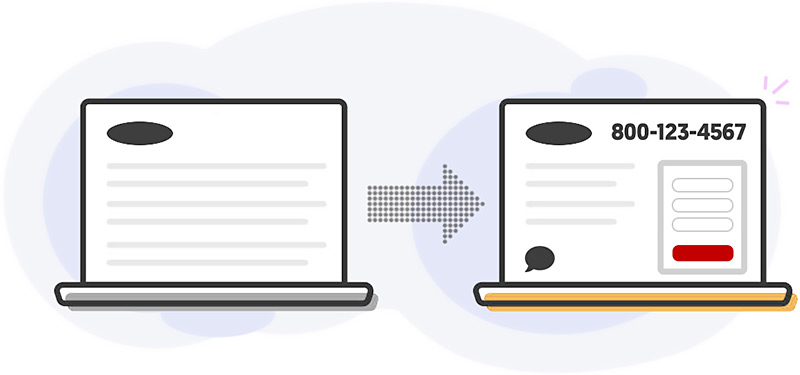
A technical difference between advertising on Google and Social Media is the structure of your campaign.
For instance, social media ads have a relatively easy setup compared to Google.
Why?
Because Google requires a landing page, and this is something you have to create.
A landing page is simply where you send traffic that clicks on your ad.
This is typically a page on your website or a separate marketing funnel designed specifically to convert PPC traffic into painting leads.
What makes a landing page different from a typical webpage are the elements included, and just as important, the elements that are excluded.
Let’s review some essential landing page optimizations:
Aim for conversion rates between 10-20%.
More importantly, NEVER STOP TESTING!
Even if you have a landing page that works, a better variation may still be available.
4. Set a realistic daily budget
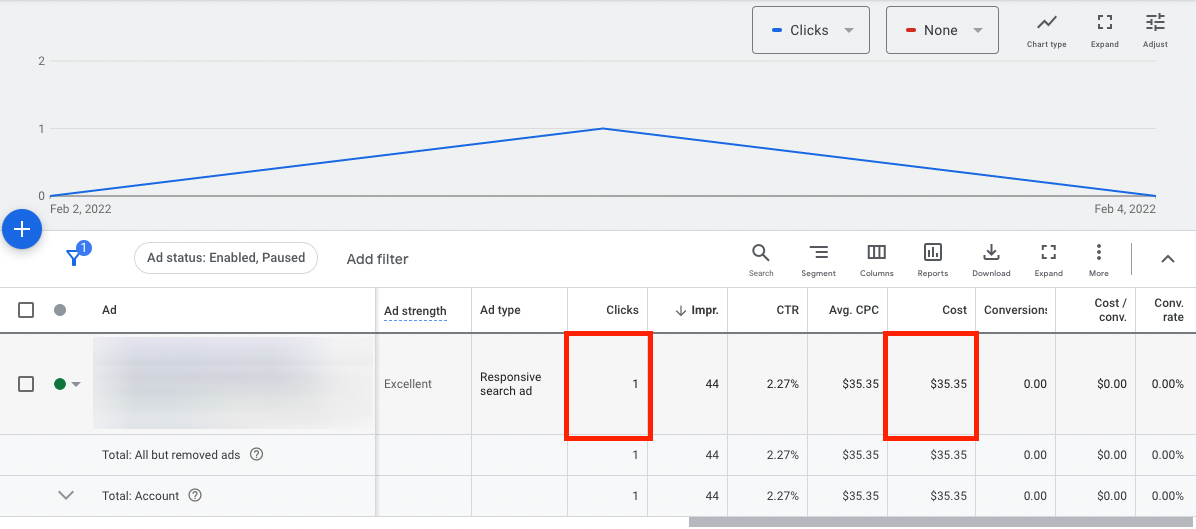
It’s no secret that the Professional Painting Industry is an extremely competitive market.
In some markets, just one click can cost over $35, and there is no guarantee that click will even convert into a lead.
So how much should you plan on spending to generate results?
The average Paid Search PPC campaign will require a budget between $50-$65/day with an average CPL (cost per lead) between $50-$100.
In some competitive markets like Los Angeles and Dallas, where Angi and Home Advisor are willing to spend $500 on a lead, your average CPL may be closer to $150.
Setting these expectations will give you the foresight to determine whether advertising on this channel is even worth your time.
What is an acceptable ROAS for PPC advertising?
ROAS = Return on Ad Spend. It’s just a fancy term for ROI when only accounting for the money invested into ad campaigns.
An acceptable ROI in the professional painting industry is a 5-10x return.
Sounds great right? Now let’s set expectations. Unless you know exactly which keywords produce the best results there will be some trial and error in the beginning.
We recommend planning to breakeven the first three months while you’re in the “learning phase” of Google’s algorithm.
You should aim for a 5-10x ROAS once your campaigns are fully optimized (10-20% conversion rates with <$10 cost-per-click).
Here are a few PPC strategies to reach this target ROAS:
We recommend monitoring advertising campaigns daily during the first 30 days.
Watch for trends in the data. For example, if you notice a certain time of day or day of the week that is underperforming, simply turn off your campaigns on those days/times.
5. Optimize ad copy for clicks
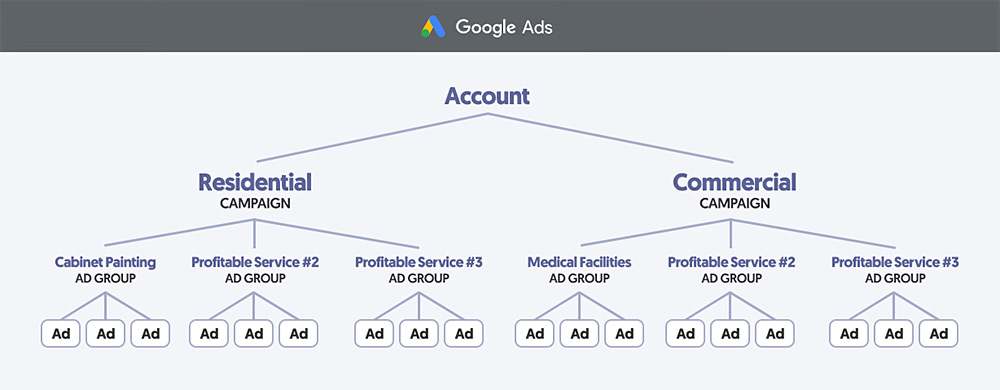
Google recommends creating at least three Ads per Ad Group. This can get tedious, so don’t be afraid to leverage AI such as ChatGPT.
Why is this CRITICAL to the success of your campaigns?
Because Google constantly tests and refines which ads it serves to increase the CTR (click-through rate). The more options you provide, the more “at bats” you receive, and the better ROAS you can expect.
Use Google Ad Extensions
In addition to ads, Google also provides several modifiers called Ad Extensions.
These provide snippets of important information that make your ads more clickable.
There are several types of Ad Extensions, each with a unique goal, but for your Painting Business we recommend the following:
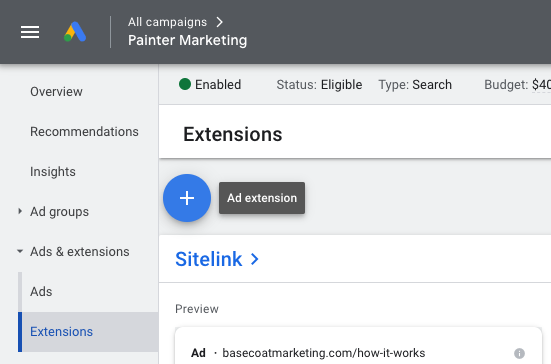
Google recommends using as many Ad Extensions as is applicable for your business.
Keep the content on these extensions current to avoid negatively impacting your Google Ads optimization score.
For example, if you’re running a Summer Promo, be sure to update it once it’s expired.
Pre-qualify your clicks
Try writing ad copy to deter unqualified clicks.
For instance, if you’re targeting full-house exterior repaints, include a “Starting at” price such as: “Exterior House Painting starting at $4000”.
While this is likely to reduce the number of clicks, it will ensure you’re only paying for leads that can afford your services, thus increasing your ROAS.
6. Geotargeting your primary service areas
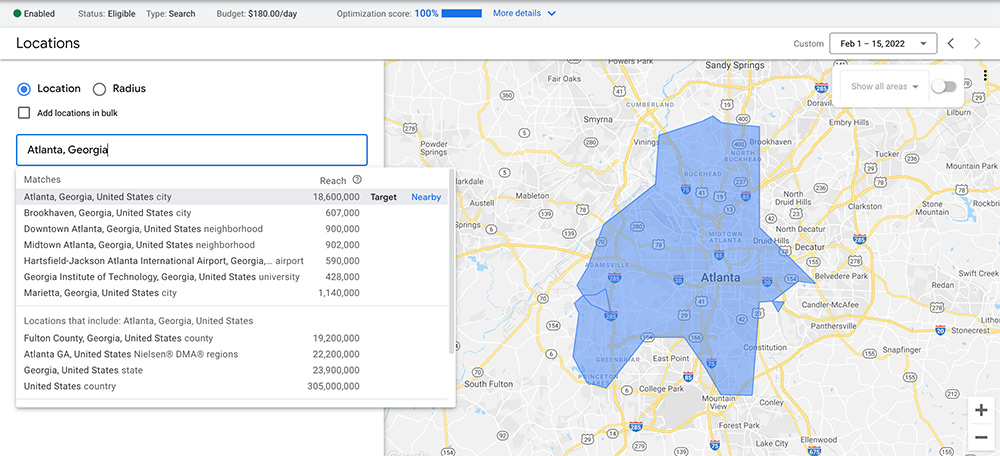
One of the KPIs Google uses to measure the performance of your ads is CTR (click-through rate).
CTR = Clicks / Impressions
Over time, Google will throttle campaigns with a low CTR, so it’s important to measure and improve your ad copy to increase this metric.
Including local, location-specific terms in your ad copy is an effective way to increase your CTR.
For example, many refer to Minneapolis and St. Paul as the “Twin Cities,” but locals call it simply “The Cities.” Using specialized language relevant to an area makes your ad more relatable to your audience.
This increases trust and motivates your audience to click on your ad.
Use local phone numbers
If your painting business uses a toll-free phone number, it’s recommended to hide it behind a local call tracking phone number on your ads.
Why?
Because your customers subconsciously relate to a phone number with the same area code as theirs. This minor change can increase your direct ad calls by over 20%.
Incorporate zip codes
Over 65% your customers who search for your services on Google search using their city or zip code.
(Source: Think with Google)
When you use a zip code in your Ad Copy and Display URL, it increases the relevance and trustworthiness of your ad.
For example, you might use a heading like “Best Painters in Philadelphia, PA 19046” and then create a specific URL that includes the city name and zip code.
7. Apply for Google Local Services Ads
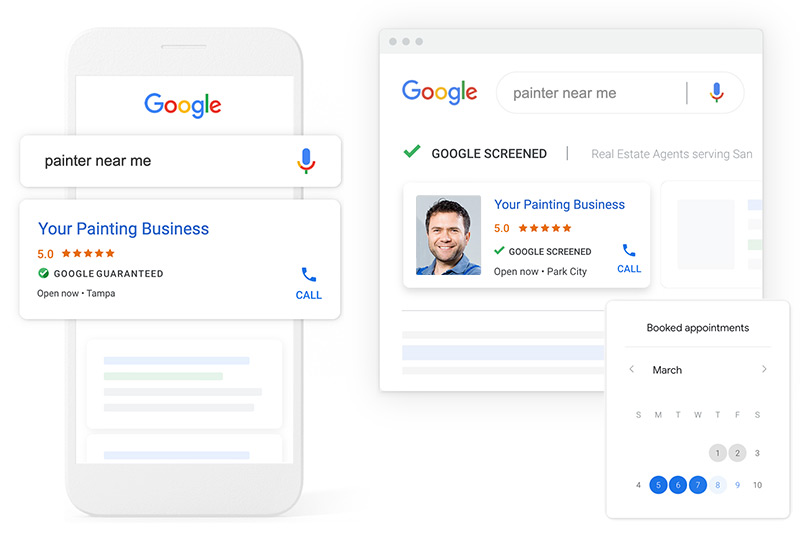
Google Local Services Ads (also known as LSAs) are a lesser-known paid search option in the Professional Painting Industry.
These ads are ideal for Painting Companies as you only pay for quotable leads, not clicks or impressions.
Unlike Google Ads, which require bidding against your competitors for the terms you want to rank for, Google chooses which painting companies they display based on response times, reviews, and overall lead conversion rate.
For more information, take a look at the article we wrote specifically for this ad channel, which includes a podcast interview and our SOP to launch these ads for your Painting Business.
8. Leave it to the Experts
Running an effective PPC campaign for your painting business is one of the best ways to obtain new, high-quality leads on demand.
It is also one of the best ways to burn thousands of dollars with a misconfigured campaign.
If you are looking for a hands-off solution, give us a call today to discuss our Marketing Programs and if they’re a good fit for your Painting Business!


